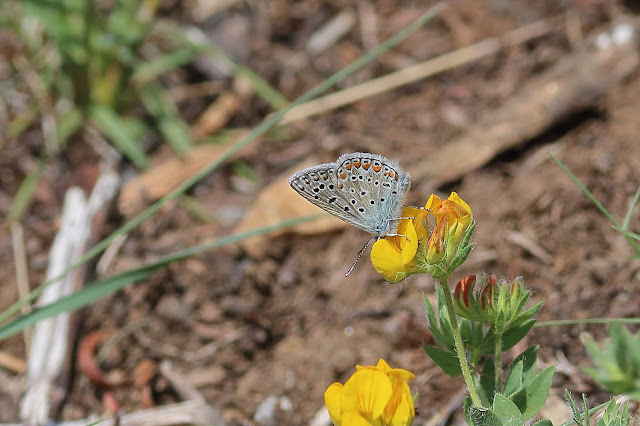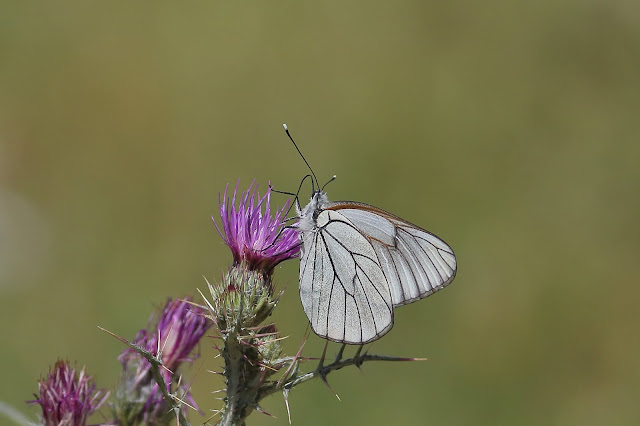Hola una vez más.
Hi again.
Hi again.
En el siguiente enlace podéis ver nuestros próximos viajes fotográficos y de observación de aves y mamíferos nacionales y al extranjero. Espero que os gusten y os animéis a venir conmigo. Una experiencia que nunca olvidareis.
In the following link you can see our next national and foreign Birds and Mammals photographic and observation trips. I hope you like them and I encourage you to come with me. An experience that you will not forget.
Esta sierra fue declarada por la UNESCO Reserva de la Biosfera en el 2005.
This Mountain Range was declared by the UNESCO Biosphere Reserve in 2005.
Además de poder verse varias especies de currucas, las estrellas de esta parte de la geografía Madrileña son los alcaudones dorsirrojos (Lanius collurio), los papamoscas cerrojillos (Ficedula hypoleuca) y los bisbitas arbóeros (Anthus trivialis).
Besides being able to see several species of warblers, the stars of this part of the Madrilenian geography are Red-backed Shrikes, Pied Flycatchers and Tree Pipits.
También son de destacar la gran variedad de flora e insectos que se pueden observar.
Also noteworthy is the great variety of Flora and Insects that can be observed.
En esta entrada os voy a mostrar algunas de las cosas que pudimos observar y fotografiar en dos viajes a este bello paraje. El primero de ellos fue una vista privada de medio día el día 9 de junio y el segundo mi viaje programado del 12 de junio.
In this post I am going to show you some of the things that we were able to observe and photograph in two trips to this beautiful place. The first was a private half-day trip on June 9th and the second was my scheduled trip on June 12th.
VISITA PRIVADA DE MEDIO DÍA DEL 9 DE JUNIO:
PRIVATE HALF DAY VISIT ON JUNE 9:
El cliente no había visto nunca a los bisbitas arbóreos (Anthus
trivialis) y, aunque ya había visto papamoscas cerrojillos (Ficedula
hypoleuca) en paso migratorio, los quería ver en plumaje nupcial y como se reproducen.
The client had never seen Tree
Pipit and, although he had already seen Pied Flycatcher in migration, he wanted to see them in their breeding plumage and how they reproduce.
Hizo muy buen día y unas temperaturas muy agradables.
It was a very sunny day and very pleasant temperatures.
El primer ave que se dejo fotografiar fue esta alondra totovía (Lullula
arborea).
The first Bird to be photographed was this Wood Lark.
Enseguida empezamos a ver a los bonitos machos de papamoscas cerrojillos (Ficedula
hypoleuca).
Right away we began to see the beautiful male Pied Flycatcher.
En este día las hembras se hicieron de rogar y fotografié muy pocas.
On this day females were scarce and I photographed very few.
Los que estuvieron muy confiados fueron los bisbitas arbóreos (Anthus
trivialis).
Those who were very fearless were the Tree Pipits.
Vimos varios avispones europeos (Vespa crabro).
We saw several European Hornet.
Al también ciervos volantes europeos (Lucanus cervus).
And also European Stag Beetle.
Algunas mariposas. En la foto un Deshollinador (Odezia atrata).
Some butterflies. In the photo a Chimney Sweeper.
Moteada amarilla (Pseudopanthera macularia).
Speckled Yellow.
Blanquita de la col (Pieris rapae).
Small White.
Pandora (Argynnis pandora)
Cardinal.
Y antes de abandonar el bosque de robles otro bisbita arbóreo (Anthus
trivialis) más confiado aun que el anterior.
And before leaving the oak forest another Tree
Pipit even more fearless than the previous one.
Que gusto me da cuando puedo ver a un ave tan cerca y que parece no desconfiar de las personas.
What a pleasure it gives me when I can see a Bird so close and that it seems not to distrust people.
VISITA ORGANIZADA DEL 12 DE JUNIO:
SCHEDULED TRIP JUNE 12TH:
También en esta ocasión lucio el sol durante todo el día y la temperatura fue muy agradable.
Also on this occasion the sun shone all day long and temperature was very pleasant.
Además de ser un sitio muy bueno para pajarear, es un lugar de impresionante belleza. Solo por eso merece la pena visitarlo.
Besides being a very good place for birding, it is a place of breathtaking beauty. That alone is worth a visit.
Uno de sus árboles destacados. El Rebollo de la dehesa.
One of its outstanding trees. The Rebollo de la Dehesa.
Un tupido bosque maduro de roble negro o melojos.
A dense mature forest of Black oak or Melojos.
Nada más llegar vimos dos ejemplares de abejero europeo (Pernis
apivorus). Este era de morfo claro.
As soon as we arrived, we saw two specimens of the European
Honey-buzzard. This one was light morph.
Macho de curruca carrasqueña (Sylvia
cantillans).
Male Subalpine
Warbler.
Pudimos oír y ver varios cucos comunes (Cuculus canorus).
We were able to hear and see several Common Cuckoos.
Curruca zarcera (Sylvia communis).
Common
Whitethroat.
Los alcaudones dorsirrojos (Lanius collurio) estaban muy desconfiados. En la foto un macho.
Red-backed Shrike were very suspicious. In the photo a male.
Alcaudón real meridional (Lanius
meridionalis).
Southern
Grey Shrike.
Había varios milanos reales (Milvus
milvus).
There were several Red Kites.
Un abrevadero estaba lleno de rana ibérica (Pelophylax perezi).
A trough was full of Iberian Waterfrog.
Tambien andaba por allí esta libélula de vientre plano (Libellula depressa) macho.
This male Broad-bodied Chaser was also there.
Otro abejero europeo (Pernis
apivorus).
Another European
Honey-buzzard.
Short-toed
Eagle.
Las currucas mirlona occidental (Sylvia hortensis) andaban muy escondidas.
Western Orphean
Warbler were very hidden.
Un bonito macho de escribano soteño (Emberiza
cirlus).
A beautiful male Cirl
Bunting.
Vanesa de los cardos (Cynthia cardui).
Painted Lady.
Cantárida o mosca española (Lytta vesicatoria),
Spanish Fly.
Fue utilizada en medicina hasta principios del siglo XX como vesicante.
It was used in medicine until the beginning of the 20th century as a vesicant.
Aparte de los efectos vesicantes sobre la piel, tomada por vía oral afecta la mucosa gastrointestinal donde produce epigastralgia, náuseas, vómito y diarrea, y en el urotelio desde el riñón hasta la vejiga donde produce irritación intensa incluso hasta la retención urinaria y sangrado (hematuria). En pequeñas dosis únicamente producirían molestias urinarias acompañadas de priapismo. Este efecto secundario, la erección espontánea del pene, convirtió a la cantárida en el afrodisíaco de referencia hasta el siglo XVII cuando cayó en desuso dado el número de envenenamientos, con consecuencias mortales, que produjeron tales prácticas. Sólo a mediados del siglo XVIII volvería a estar de moda, cuando en Francia se la conoció como los caramelos Richelieu: “pastilles Richelieu”. También fue usada como abortivo, como estimulante y directamente como veneno; en polvo, mezclada con la comida, puede pasar inadvertida. (Fuente: Wikipedia).
Apart from the vesicant effects on the skin, taken orally it affects the gastrointestinal mucosa where it produces epigastralgia, nausea, vomiting and diarrhea, and in the urothelium from the kidney to the bladder where it produces intense irritation even up to urinary retention and bleeding. In small doses they would only produce urinary discomfort accompanied by priapism. This secondary effect, the spontaneous erection of the penis, made the cantárida the aphrodisiac of reference until the seventeenth century when it fell into disuse due to the number of poisonings, with fatal consequences, that such practices produced. It was only in the middle of the 18th century that it became fashionable again, when in France it became known as Richelieu candies: “Richelieu pastilles”. It was also used as an abortifacient, as a stimulant and directly as a poison; powder, mixed with food, can go unnoticed. (Source: Wikipedia).
Una alondra totovía (Lullula
arborea).
A Wood Lark.
Doncella de la centaurea (Melitaea phoebe).
Knapweed Fritillary
Pandora (Argynnis pandora)
Cardinal.
Sofía (Issoria lathonia).
Queen of Spain Fritillary.
Icaro (Polyommatus icarus).
Common Blue.
La misma especie anterior.
The same previous species.
Blanca del majuelo (Aporia crataegi).
Blackveined White.
Avispón europeo (Vespa crabro).
European Hornet.
Los bisbitas arbóreos (Anthus
trivialis) también se dejaron ver aunque en esta ocasión menos confiadas. Quizás porque había más gente que en la visita privada.
Tree
Pipit also showed up, although this time they were more aware of people. Perhaps because there were more people than in the private visit.
Sin embargo, los papamoscas cerrojillos (Ficedula
hypoleuca) estaban más activos que en la visita anterior. En la foto un macho.
However, Pied Flycatchers were more active than on the previous visit. In the photo a male.
Pudimos ver muchas más hembras. Se conoce que los pollos ya debían de estar más grandes y salían más del nido en busca de alimento para sus crías.
We were able to see many more females. Perhaps chicks were already older and they were coming out more of their nest in search of food for their brood.
También los trepadores azules (Sitta europaea) estaban muy ocupados llevando comida a su descendencia.
Also European
Nuthatch were very busy bringing food to their offspring.
Me llevé una grata sorpresa al ver una pareja de alcotanes europeos (Falco subbuteo) y mayor aun cuando comprobé que les había podido sacar una foto pues el encuentro fue muy rápido y fugaz.
I was pleasantly surprised when I saw a pair of Hobby and even bigger when I verified that I had been able to take a photo of them because the meeting was very quick and fleeting.
Algunas flores que me llamaron la atención. Un gladiolo silvestre (Gladiolus communis).
Some flowers caught my eye. AWild Gladiolus.
Ajo de cigüeña (Allium sphaerocephalon).
Round-headed Garlic.
Botón azul (Jasione montana).
Sheep's-bit Scabious.
Que pocos saltamontes se ven hoy por los campos.
Very few Grasshoppers are seen today in countryside.
Había muchos mosquiteros papialbos (Phylloscopus
bonelli).
There were many Western
Bonelli's Warbler.
Un macho de pinzón vulgar (Fringilla coelebs).
Common
Chaffinch.
Si queréis suscribiros a este blog de los viajes que hacemos pincha en el siguiente enlace: Suscribirse y haz clic en ¿ Quieres suscribirte a nuestro blog?
If you want to subscribe to this post about the trips we do, click on the following link: Susbcribe and click on: Do you want to subscribe to our blog?
Espero que os haya gustado y hasta pronto.
I hope you like it and see you soon.




















































































